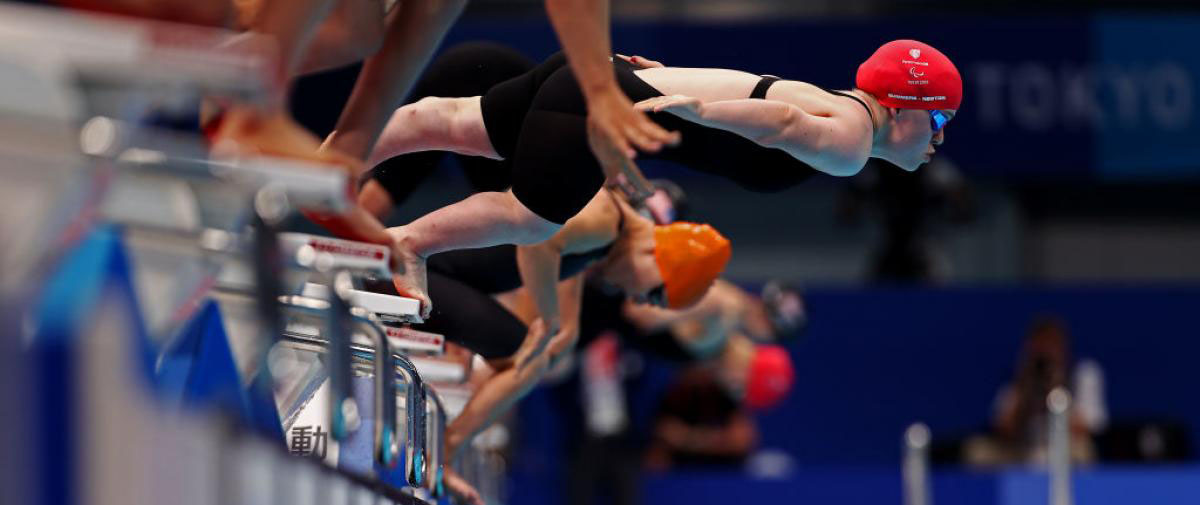Para Swimming

Although not a new term, it may first help to explain what Para Swimming means in its uses and reality.
The term has become commonly used as a derivation of Paralympic, which itself is a derivation of the original title of Parallel Olympics.
Para swimming is now used to describe any aquatic activity that is participated in by someone who would define themselves as a Disabled Person.
Warwickshire ASA as inclusive provider and supporter of aquatic activities will endeavour to ensure that all activities under its auspice are organised and delivered in as accessible manner as possible. To this end WASA will support, develop and promote inclusive Para Swimming activities and the development of inclusive practices with and for its member organisations and individuals within the catchment.
Competitive Para-Swimming
Competitive Para Swimming is both easy and complicated to understand. At its core, just as with any non-disabled swimmer, there will be Disabled People who are swimmers who would wish to compete, and there must always be provision made for Para Swimmers to take part in competition, whether this is inclusive, or when appropriate, exclusive. To make competition fair, a series of classifications has been devised that delivers a framework for fair and equitable competition.
Understanding the basics of the classification system is needed to be able to offer competitive opportunities. What you don’t need to understand, is every individual’s medical diagnosis, needs or impacts of their impairments on everyday life, but rather the classifications that swimmers have provide the necessary framework for participation in competitive swimming.
The Para Classification system is a global structure that is used to ensure that all and any competitions and competitors operate in the same way. Essentially there are 15 levels of classification in the global structure, which is overseen by the International Paralympic Committee, plus in the UK we have the Disability Certificate.
The 15 classifications are created from 4 main sub-groups and stratified depending on the functional capacity of the individual swimmer. The classifications are also in 3 areas, S denotes all strokes bar breaststroke and Individual Medley, which in turn are classified as SB and SM, as these disciplines are affected differently by differing functional capacities. The classifications are as follows:
- Physical Impairment S1 to S10 (SB1 -SB9 and SM1-SM10) with S10 being those with the greatest physical functional capacity
- Visual Impairment S11 to S13 (SB11 -SB13) with S13 being those with the least impact on their vision
- Intellectual Impairment S14 & SB14
- Hearing Impaired S15
Each impairment group will have a minimum level of impact on functional capacity that has to be reached before a classification is offered.
If you are or have a swimmer that may be eligible for classification, then please click here for greater information and further links with application details
Domestic Competition Options and British Disability Points
There are two basic methods of creating fair competition within the classification structure that can be adopted by any club organisation and at any level of domestic competition form Club Champs to Nationals.
- In Class Competition – This is where there are enough competitors within the same classification to compete against each other for an outright fastest swimmer-based competition
- Inter-Class Competition – This is used when competitor levels are such that it is not feasible to run In Class Competition. This method uses a system known as British Disability Points, or BDP for short, which uses a parallel model to FINA Points for calculation relative performance based on world best swims. This system can then be used for exclusive ranking, such as is used as WASA events where Para Swimmer are awarded rankings within the Para Swimming cohort of the event. However, BDP can also be used in direct relation to FINA Points so that for example as used by Orion SC at their Club Champs, Para-swimmers compete against their club mates with both points systems used together to determine race rankings. This system allows for and should ensure, that all meets, from club to National level, are inclusive of Para Swimming.
Para Swimmer Development & Making Para Swimming a Reality for Your Club
The most important element in making your club accessible to Para-Swimmers is the desire to be inclusive as this will provide the drive and determination to make it a reality where-ever possible.
Para Swimmers do not just start out ready to compete, like every other swimmer there needs to be a development programme from learn to swim right through the ADSP and into the OADF. Sometimes development needs will necessitate specific and or separate provision to create a pathway into inclusive participation and competition.
Therefore, WASA will support and encourage all clubs to create and implement inclusion strategies that allow for the development of the broadest level of opportunities for would be Para- swimmers to learn to swim, and if desired move into and upward through the competitive structures.
For further information please do not hesitate to contact WASA.